Disclosure: This article contains affiliate links. We may earn a commission from purchases at no extra cost to you, which helps our travel content.
The warehouse floor and the Zambezi River couldn't be more different, yet both follow the same fundamental principle: flow. As I pushed my paddle through the silty waters of Africa's fourth-largest river system, I realized that managing inventory and navigating hippo territories share a surprising connection—both require respect for natural rhythms and careful observation of what lies beneath the surface. After coordinating a supply chain conference in Johannesburg, I extended my stay for what would become the most transformative week of my traveling career: a luxury canoe safari through Zambia's Lower Zambezi National Park.
Preparing for the Zambezi's Wild Symphony
When planning a Lower Zambezi canoe safari, preparation is everything. This isn't your standard weekend paddle—it's an immersion into one of Africa's last truly wild river ecosystems.
I booked my expedition through Royal Zambezi Lodge, a luxury outfitter that balances creature comforts with authentic wilderness experiences. Their seven-day canoe trails include professional guides, porters, and mobile camping setups that would make even the most dedicated glampers nod in approval.
The essential gear list surprised me with its specificity. Beyond the expected safari neutrals (leave anything bright at home), you'll need a high-quality dry bag to protect cameras and electronics. The Zambezi doesn't forgive electronic casualties. My binoculars proved invaluable for spotting wildlife along the shorelines—the difference between seeing a distant gray blob and appreciating the wrinkled skin patterns on a bathing elephant.

💡 Pro Tips
- Book with operators who employ local Zambians as guides—their knowledge of animal behavior is unmatched
- Pack light, quick-dry clothing in neutral colors (khaki, olive, brown)
- Bring twice as many camera batteries as you think you'll need—charging opportunities are limited
Life on the River: Navigation & Wildlife Encounters
The Zambezi demands respect. Each morning, our head guide Joseph would brief us on the day's route, highlighting hippo pools to avoid and elephant crossing points to observe from a safe distance. Like managing a warehouse workflow, river navigation requires constant adjustments and real-time problem-solving.
Our four-canoe convoy maintained radio contact, with guides positioned at front and rear. We paddled approximately 20-25km daily, though distance wasn't the focus—wildlife encounters dictated our pace. The river teems with over 50 mammal species and 400 bird varieties, creating a constantly shifting natural spectacle.
One afternoon, as the sun cast golden light across the water, we paused to watch a breeding herd of elephants cross a narrow channel between islands. The matriarch tested the water depth with her trunk before leading nearly twenty family members across, including a tiny calf swimming between its mother's legs. I captured the moment with my telephoto lens, which proved worth every ounce of its weight for wildlife photography.
Não é brincadeira (this is no joke)—hippos pose the greatest danger. Despite their cartoonish appearance, they're territorial and surprisingly fast. Our guides taught us to identify subtle signs of agitation: ear flicks, mouth gaping, and the ominous water ripples of submerged approach.
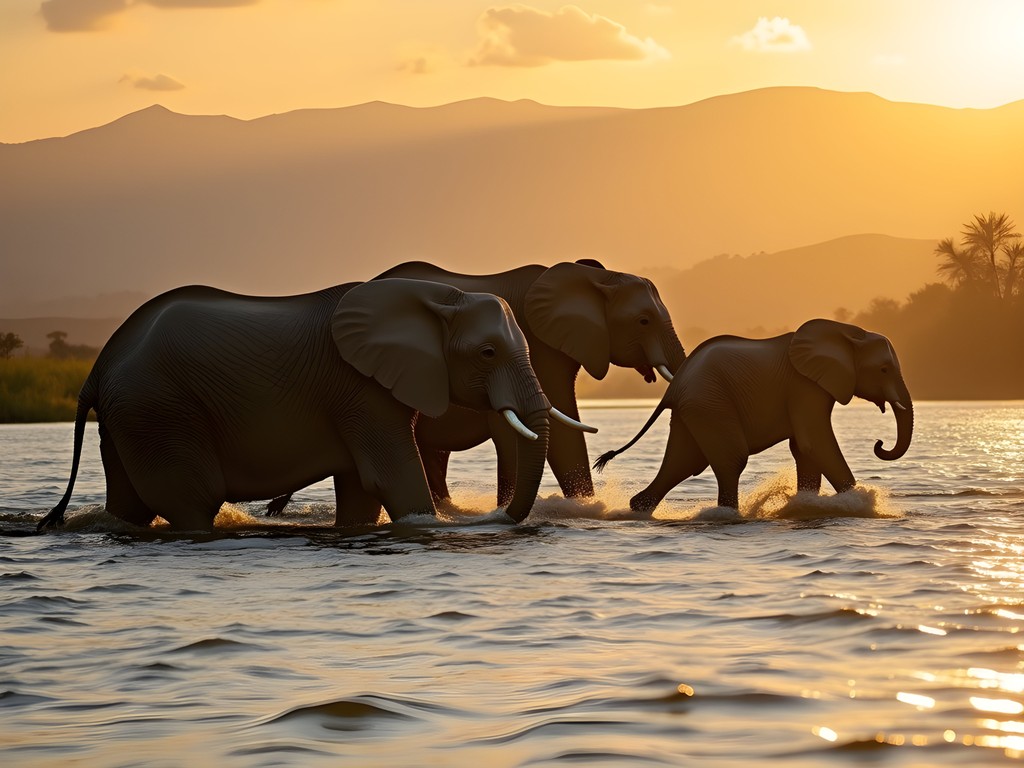
💡 Pro Tips
- Always follow guide instructions regarding distance from wildlife
- Learn basic paddle signals before departure
- Morning paddles offer the best wildlife viewing with calm waters
Luxury in the Wild: Mobile Tented Camps
The term 'camping' hardly does justice to our nightly accommodations. Each afternoon, we'd arrive at a predetermined riverside location to find our camp already established by the advance team. Canvas tents with proper beds, hot bucket showers hanging from acacia trees, and a dining area complete with white tablecloths and wine glasses awaited us.
After years of business travel with standardized hotel rooms, this brand of luxury felt revolutionary—authentic without sacrificing comfort. Each campsite was selected for both strategic safety (away from hippo trails) and scenic beauty. My favorite was our third night's location on a sandy island mid-river, where we dined by lantern light as a leopard called from the mainland.
Sleep quality in the wilderness depends on proper gear. I'm grateful I invested in a quality sleeping bag liner that added comfort while keeping the occasional crawling visitor at bay. For those light sleepers concerned about nature's nocturnal symphony, quality earplugs can help, though I preferred embracing the sounds of hippos grunting and lions calling in the distance.
Meals were surprisingly sophisticated three-course affairs prepared over open flames. Fresh bread baked in Dutch ovens, grilled tilapia caught hours earlier, and traditional nshima (cornmeal porridge) with game meat stews highlighted the culinary program. The chef's ability to create gourmet meals with minimal equipment reminded me of the elegant efficiency I strive for in warehouse operations.

💡 Pro Tips
- Pack a headlamp with red light mode to preserve night vision in camp
- Bring a lightweight power bank for essential electronics
- Request dietary restrictions in advance—chefs can accommodate but need preparation time
Beyond Paddling: Walking Safaris & Cave Explorations
While the canoe experience forms the heart of this expedition, the daily rhythm includes land-based adventures. Each afternoon after establishing camp, our guides led optional walking safaris into the riverine forests and floodplains. The perspective shift from water to land reveals different wildlife behaviors and tracking opportunities.
On our fourth day, we explored the Mpata Gorge caves, ancient dwellings with San Bushmen rock paintings dating back thousands of years. As someone who seeks out urban cave systems in my city explorations, these natural formations with their ochre handprints and hunting scenes felt like connecting with the original graffiti artists.
The walking safaris require proper footwear. My hiking boots provided ankle support on uneven terrain while offering protection from thorns and the occasional snake encounter. Joseph taught us to identify tracks, differentiate between black and white rhino middens (sadly, we saw no actual rhinos), and recognize the territorial markings of leopards.
The most memorable land excursion was tracking a pride of lions that had made a buffalo kill the previous night. Following their prints through drying mud, we eventually found them resting in the shade of a massive sausage tree, bellies distended from their feast. The alpha male's roar at sunset vibrated through my chest—a sound no recording can adequately capture.

💡 Pro Tips
- Always walk single-file behind the armed guide during walking safaris
- Bring a small backpack with water and camera for afternoon excursions
- Wear closed shoes and long pants for protection against thorns and insects
Cultural Connections: Village Visits & Conservation Efforts
The Lower Zambezi isn't just a wildlife sanctuary—it's home to communities whose relationship with the river spans generations. Midway through our journey, we visited Mugurameno village, where local conservation initiatives are creating sustainable alternatives to poaching.
The community-operated Mugurameno Cultural Village Tour provides authentic insights without feeling exploitative. We observed traditional fishing methods, visited the local school (bring donation supplies if possible), and participated in a music session that reminded me of late-night karaoke in Tokyo—different instruments but the same human connection through rhythm.
Conservation Challenges Lower Zambezi faces include poaching, human-wildlife conflict, and habitat fragmentation. The wildlife guide book I brought helped contextualize the conservation discussions with our guides, who explained how tourism directly funds anti-poaching units.
The most inspiring project was the women's cooperative creating artisanal crafts from snare wire recovered by anti-poaching teams—literal transformation of destruction into beauty. I purchased several bracelets made from recycled snare wire, each representing a small victory against poaching while providing sustainable income for families.
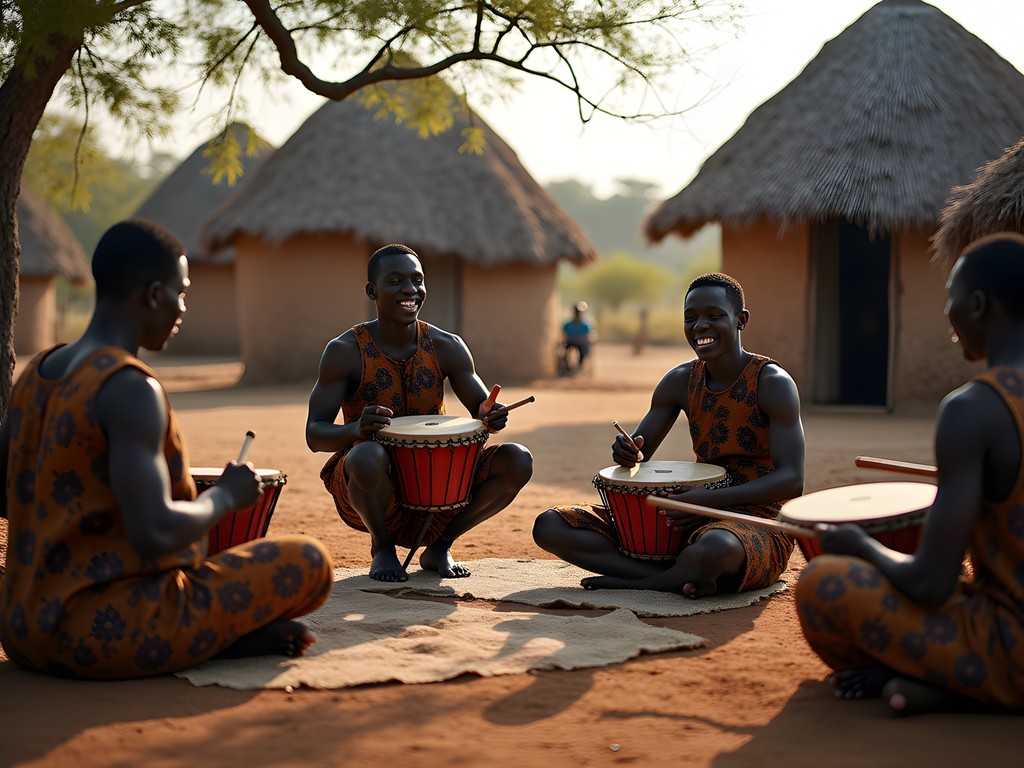
💡 Pro Tips
- Bring school supplies or medical items to donate to village communities
- Ask permission before photographing local people
- Support conservation by purchasing locally-made crafts that fund community projects
Final Thoughts
As our final evening descended over the Zambezi, I found myself sitting silently on a riverside rock, watching elephants silhouetted against the sunset while hippos began their nightly chorus. The week had reframed my understanding of luxury travel—true opulence isn't found in thread counts or minibar selections but in unfiltered access to wilderness on its own terms.
The warehouse awaiting me in Raleigh would feel sterile after this immersion in nature's complex systems, but I'd return with renewed perspective on flow, efficiency, and the delicate balance of ecosystems. Like the river itself, this journey carved new channels through my understanding of what travel can accomplish.
For those considering this adventure, know that the Lower Zambezi demands respect, patience, and a willingness to surrender control. In return, it offers transformation. As we say in Brazil, quem não arrisca, não petisca—who doesn't take risks, doesn't snack. The feast of experiences awaiting on the Zambezi is worth every moment of planning and every muscle ache from paddling.
When you go—and I hope you will—remember that you're not just a visitor but a temporary participant in one of Earth's great wild symphonies. Listen carefully. The river has much to teach.
✨ Key Takeaways
- The Lower Zambezi offers Africa's premier canoe safari experience with extraordinary wildlife viewing opportunities
- Professional guides are essential for safety and enrichment—book with reputable operators who employ local experts
- Luxury mobile camping provides comfort without disconnecting from the wilderness experience
- Supporting local conservation initiatives through tourism helps protect this fragile ecosystem for future generations
📋 Practical Information
Best Time to Visit
May to October (dry season)
Budget Estimate
$5,000-7,500 per person for 7-day luxury canoe safari
Recommended Duration
5-7 days minimum
Difficulty Level
Moderate To Challenging

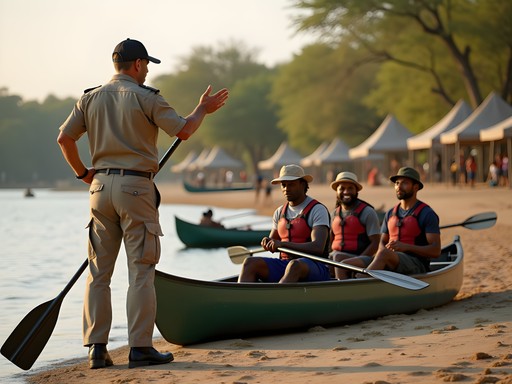
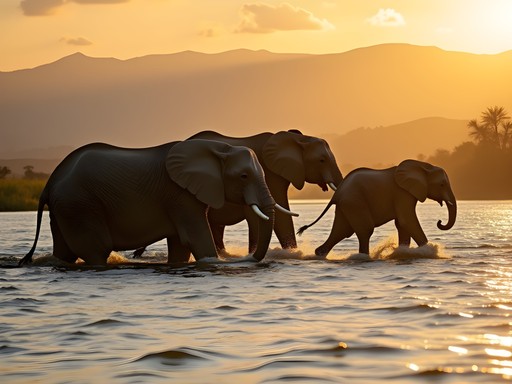
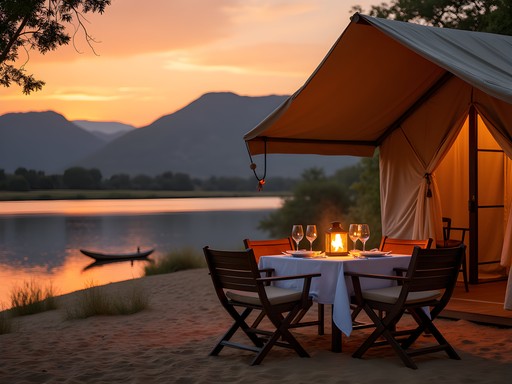

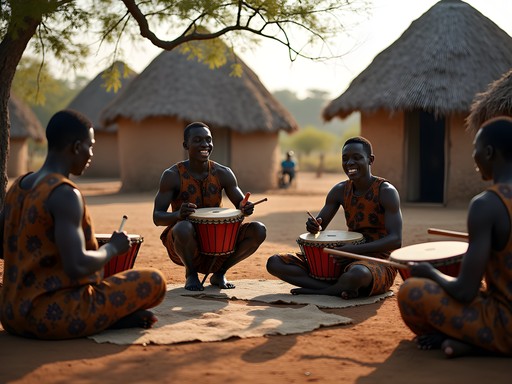


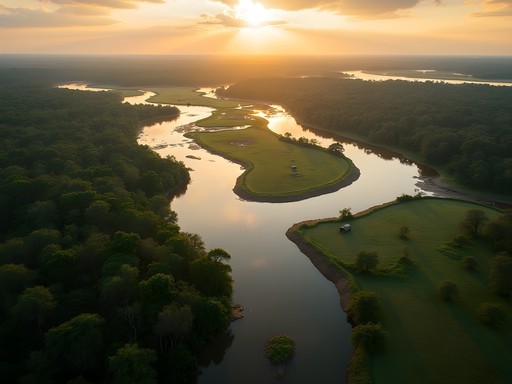
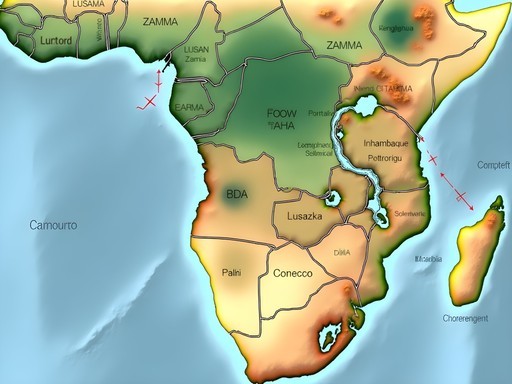






Comments
TravelBug27
Just got back from the Lower Zambezi last week! Pro tip: bring a good pair of binoculars - we saw so much wildlife on the distant banks that would've been missed otherwise. I used my compact binoculars and they were perfect for spotting birds and smaller animals while keeping the weight down.
greenfan
Good call on the binoculars! Did you feel safe with the hippos and crocs? That's honestly what makes me nervous.
TravelBug27
The guides are incredibly knowledgeable about animal behavior and keep a very safe distance. We never felt in danger, though the adrenaline rush when a hippo surfaces nearby is something else! Just listen to your guide and you'll be fine.
WildlifeWanderer
Those elephant silhouettes against the sunset must have been magical! Bucket list material right here.
cooladventurer
Just booked this trip for next April! So excited after reading your post. Any tips on what to pack that might not be obvious? Also wondering about camera gear - did you bring a zoom lens for wildlife?
Alexander Cook
Congrats on booking! April is getting into rainy season, so be prepared for some wet days. Non-obvious items: binoculars (essential), headlamp with red light (for nighttime without disturbing wildlife), quick-dry clothes (multiple sets), and insect repellent with high DEET. And yes - I brought a 100-400mm zoom which was perfect for wildlife from the canoe. Have an amazing time!
Hunter Thompson
Also bring decent gloves! Your hands will thank you after days of paddling. And don't forget high SPF sunscreen - that African sun reflecting off the water is brutal!
greenfan
This looks amazing! How physically demanding was the paddling? I'm planning a trip for next year but worried about keeping up as I'm not exactly an athlete lol
Alexander Cook
It's actually quite manageable! The current does a lot of the work, and guides configure the canoes based on strength/experience. Most days we only paddled 3-4 hours with plenty of breaks. I saw people of all fitness levels enjoying it!
greenfan
That's reassuring, thanks! Any specific camps you'd recommend? So many options online it's overwhelming.
Alexander Cook
We loved Chiawa Camp and Old Mondoro - both have excellent guides and are positioned perfectly for wildlife viewing. If budget is a concern, Royal Zambezi Lodge offers similar experiences at a slightly lower price point.
Frank Garcia
Alexander, your post captures the Zambezi experience perfectly! I did a similar canoe safari last year but in September when the water levels were lower. The wildlife concentration was incredible - we had hippos surfacing just 20 meters from our canoe at one point (terrifying and exhilarating). I'd add that the mobile tented camps were surprisingly comfortable, though I'd recommend bringing a good headlamp for nighttime bathroom trips. Did you encounter any territorial hippo behavior during your paddling? That was my biggest concern going in.
Alexander Cook
Thanks Frank! Yes, we had a few tense moments with hippos. Our guide was excellent at reading their behavior though - we'd often backtrack and find another channel when the ears started twitching. September is definitely prime time for wildlife density!
Frank Garcia
Those guides are worth their weight in gold! Ours could spot a hippo's nostrils from 100 meters away. Did you get to visit any of the caves you mentioned? That wasn't part of our itinerary.
Alexander Cook
We did! The Mpande Limestone Caves were about an hour's hike from one of our camps. Not as grand as some cave systems, but the ancient rock art made it worthwhile. Our guide said they're often skipped on shorter itineraries.
Jean Wells
Alexander, thank you for this thoughtful piece. Having paddled sections of the Zambezi myself in my younger years, I appreciate how you've captured both the serenity and wildness of the experience. The river has changed over decades, but its spirit remains. I would add that visitors should consider the ecological impact of these trips - the better operators (like those you mentioned) contribute to conservation efforts and employ local guides who truly understand the river's ecosystem. The cave explorations you mentioned are often overlooked by travelers focused solely on wildlife, but they offer fascinating insights into the region's human history. Did you happen to visit Mpamba Rock Art site during your journey?
Alexander Cook
Jean, I'm honored to have a veteran Zambezi paddler read my piece! You're absolutely right about the conservation aspect. And yes, we did visit Mpamba - those ancient paintings were incredible. The guide mentioned they're estimated to be over 2,000 years old. Truly humbling.
happylife
Those sunset photos are absolutely STUNNING! The elephants silhouetted against the orange sky... wow! Bucket list material for sure!
Hunter Thompson
Mate! This brings back memories! Did a similar trip last year but went budget-style with a local operator in Chirundu. Absolutely mental experience! We had elephants walking through our campsite one night, nearly had a heart attack. The mobile camps you mentioned look well posh compared to our setup - we were in basic tents and cooking over campfires. One tip for anyone going: bring a proper dry bag for your camera gear. I learned that lesson the hard way when our canoe tipped near a pod of hippos! Still the best adventure I've ever had though!
coffeeone
What time of year did you go? Is there a best season for this?
Alexander Cook
I went in July (dry season). May-October is generally best - lower water levels mean more exposed sandbanks for camping and better wildlife viewing as animals concentrate near the river. Avoid rainy season (Nov-Apr) when the river can be dangerous!
vacationlover
This looks amazing but terrifying! How dangerous is it with all those hippos and crocs? I'd love to try but I'm a bit scared!
Alexander Cook
Hi vacationlover! It's definitely wild, but the guides are extremely experienced. They know hippo and croc behavior patterns and keep a safe distance. I felt nervous at first too, but was surprised how safe it felt with proper guidance!
vacationlover
Thanks Alexander! That's reassuring. Maybe I'll work up the courage one day!
Venture X
Premium card with 2X miles, $300 travel credit, Priority Pass